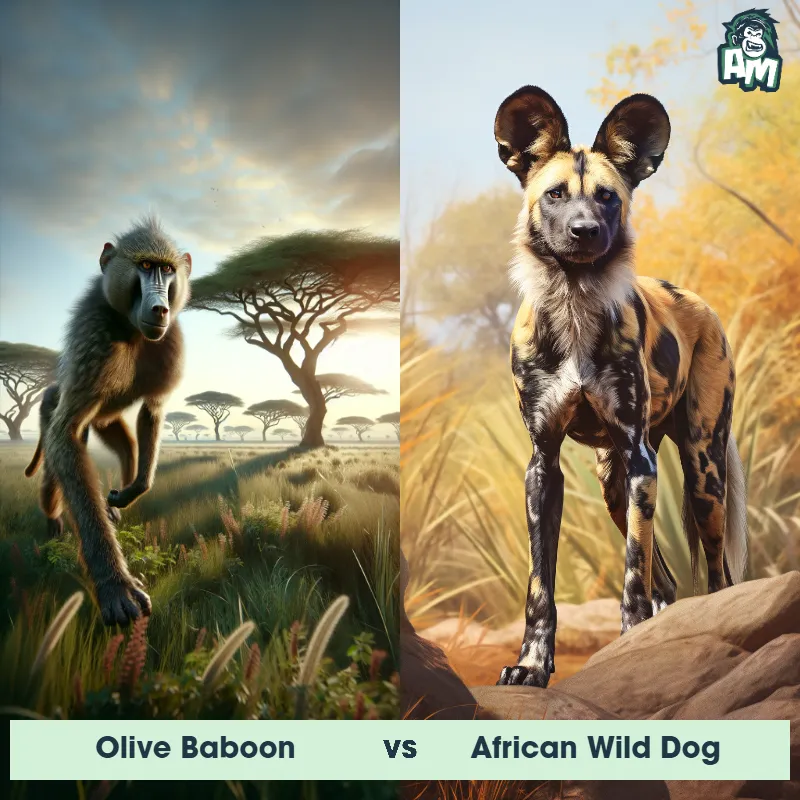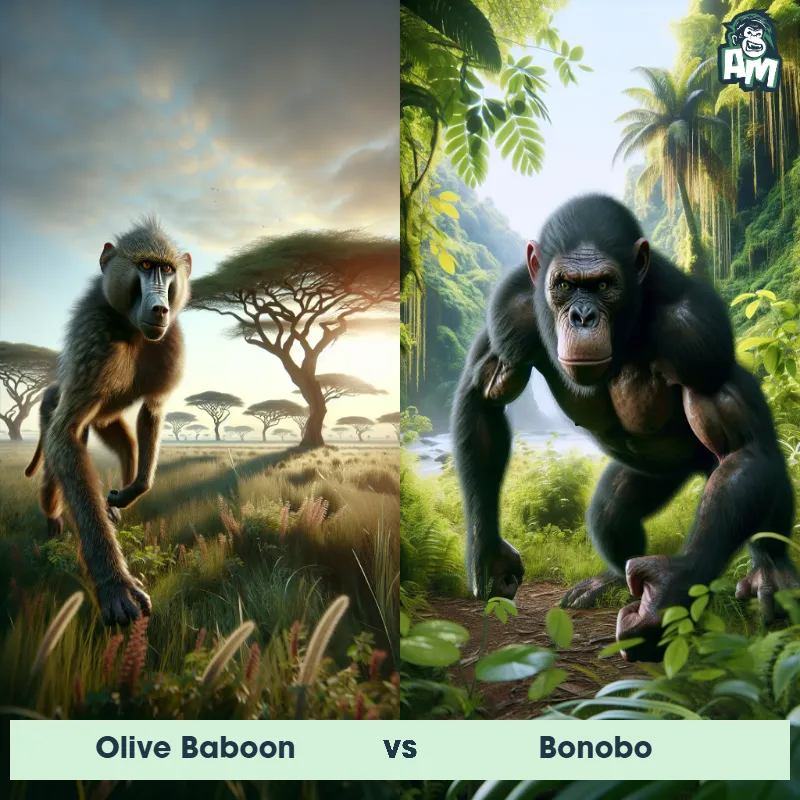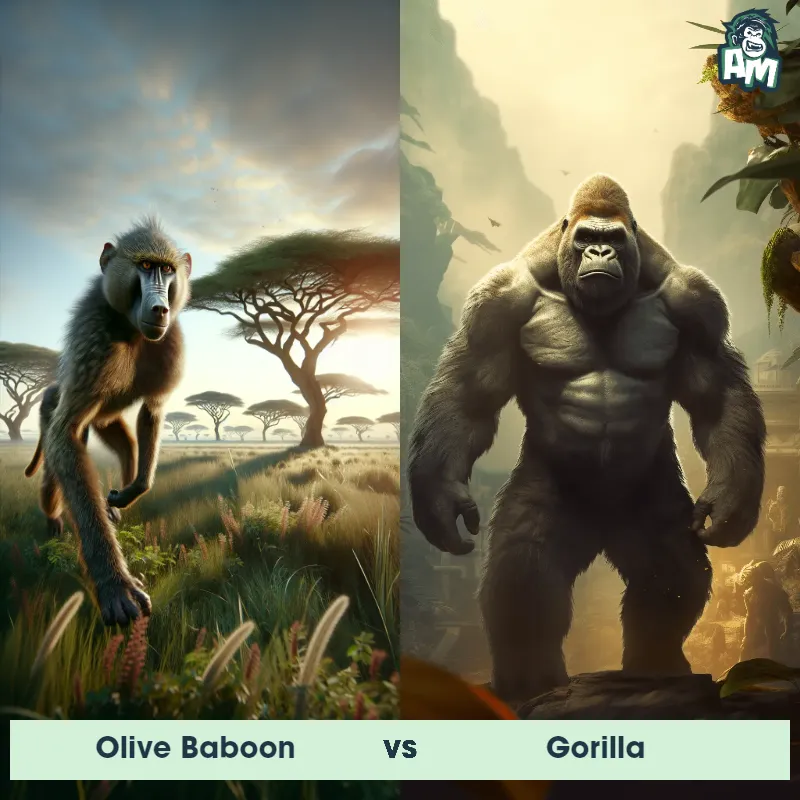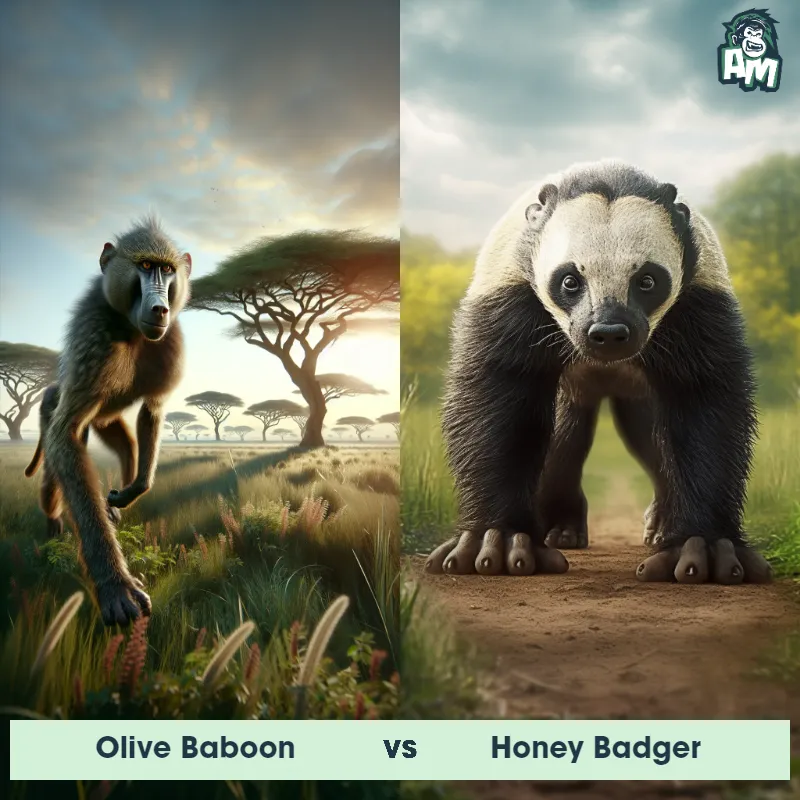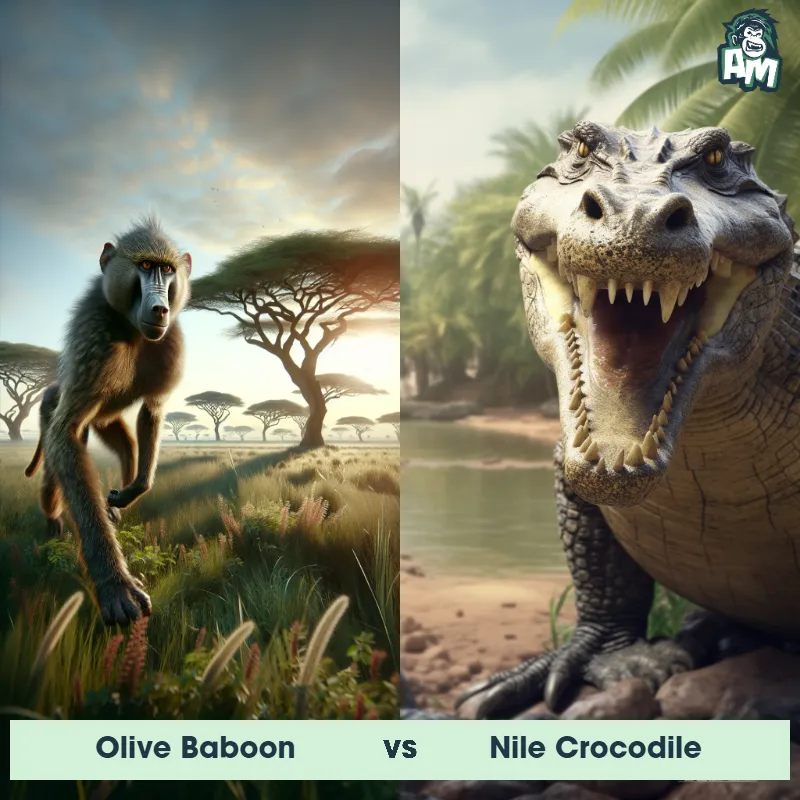The Olive Baboon
The Olive Baboon, also known as the Anubis Baboon, is a species of Old World monkey that can be found in several countries in Africa, including Ethiopia, Sudan, and Kenya. They are known for their distinctive olive-green fur which provides excellent camouflage in their natural habitat. Olive Baboons have a robust build with a long, dog-like muzzle, sharp canines, and powerful limbs. They have a complex social structure, living in multi-male and multi-female groups.

| Olive Baboon | |
|---|---|
| Size | 2-3 feet (60-90 cm) tall |
| Weight | 66-88 pounds (30-40 kg) |
| Speed | 34mph (55km/h) |
| Key Strength | Powerful jaws and canines |
| Biggest Weakness | Vulnerable to attacks on their lower body |
| Scientific Name | Papio anubis |
| Family | Cercopithecidae |
| Habitat | Forests, savannas, and woodland areas |
| Geography | East Africa and the Arabian Peninsula |
| Diet | Fruits, leaves, seeds, insects, small vertebrates, carrion, and soil |
| Lifespan | 20 years - 30 years |

The Olive Baboon
The Olive Baboon, also known as the Anubis Baboon, is a species of Old World monkey that can be found in several countries in Africa, including Ethiopia, Sudan, and Kenya. They are known for their distinctive olive-green fur which provides excellent camouflage in their natural habitat. Olive Baboons have a robust build with a long, dog-like muzzle, sharp canines, and powerful limbs. They have a complex social structure, living in multi-male and multi-female groups.
Fun Fact: Olive Baboons have a unique behavior called "ritualized aggression," where they will carefully display aggressive behaviors without actually harming each other, reducing the risk of getting injured during conflicts within the group.
| Olive Baboon | |
|---|---|
| Size | 2-3 feet (60-90 cm) tall |
| Weight | 66-88 pounds (30-40 kg) |
| Speed | 34mph (55km/h) |
| Key Strength | Powerful jaws and canines |
| Biggest Weakness | Vulnerable to attacks on their lower body |
| Scientific Name | Papio anubis |
| Family | Cercopithecidae |
| Habitat | Forests, savannas, and woodland areas |
| Geography | East Africa and the Arabian Peninsula |
| Diet | Fruits, leaves, seeds, insects, small vertebrates, carrion, and soil |
| Lifespan | 20 years - 30 years |
Olive Baboon Matchups
We use AI to simulate matchups between the Olive Baboon and other animals. Our simulation considers size, strength, and natural predatory behaviors to determine the most likely outcome.

Can't find the Matchup you want?
Create Your Own MatchupOlive Baboon: Diet, Predators, Aggression, and Defensive Behaviors
What do Olive Baboons eat?
Olive Baboons are omnivores and their diet consists of a variety of foods including fruits, leaves, seeds, insects, small animals, and even occasionally small mammals. They are opportunistic feeders and their diet can vary depending on the season and availability of food in their habitat.
Do Olive Baboons have any predators?
Yes, Olive Baboons have several predators in the wild including leopards, lions, hyenas, and crocodiles. These predators often target young baboons or individuals that are separated from the group. Baboons are also vulnerable to aerial predators such as eagles.
Are Olive Baboons aggressive?
Olive Baboons are known to be quite aggressive, especially towards outsiders or individuals from rival groups. They can become territorial and defend their food sources or females aggressively. They will not hesitate to use their sharp canines and strong jaws to protect themselves or their group.
Do Olive Baboons fight?
Yes, Olive Baboons engage in fights, both within their own groups and with rival groups. Dominance hierarchies within the group are established through fights and displays of aggression. These fights can be intense, with individuals using their teeth, hands, and even vocalizations to establish dominance.
How do Olive Baboons defend themselves?
Olive Baboons have several defense mechanisms to protect themselves from predators or rivals. They can vocalize loudly to alert the group of danger, show threatening displays such as lunging or baring their teeth, or even coordinate group defense tactics such as mobbing a predator or rival group to drive them away.
What is the biggest weakness of Olive Baboons in a fight?
One of the biggest weaknesses of Olive Baboons in a fight is their vulnerability to predators, especially when they are separated from the group. Baboons rely on their numbers and collective strength for defense, so isolated individuals are at a higher risk of being targeted by predators. Additionally, their aggressive behavior towards each other can sometimes lead to injuries or even fatalities within the group.
Fun Fact: Olive Baboons are highly adaptable and can inhabit various types of environments, including grasslands, savannas, and even forested areas, allowing them to thrive in different habitats despite habitat loss.
Fun Fact: Olive Baboons have a versatile diet that consists of fruits, leaves, seeds, grass, insects, and small vertebrates, making them omnivorous and capable of exploiting diverse food sources depending on the availability and season. They have also been observed stealing food from humans and other animals when given the opportunity.



